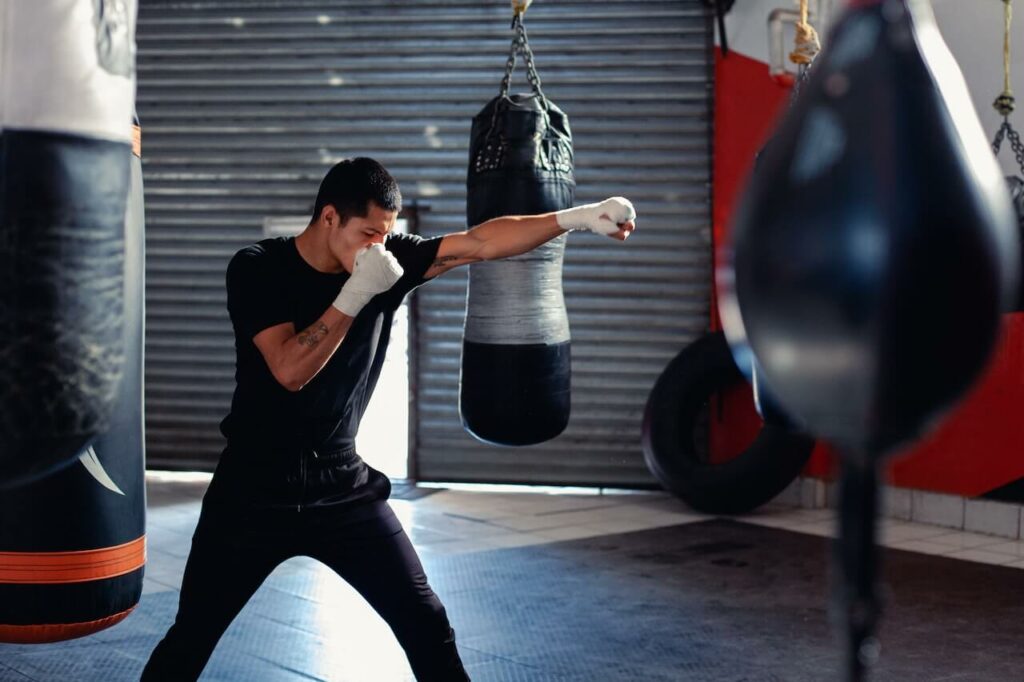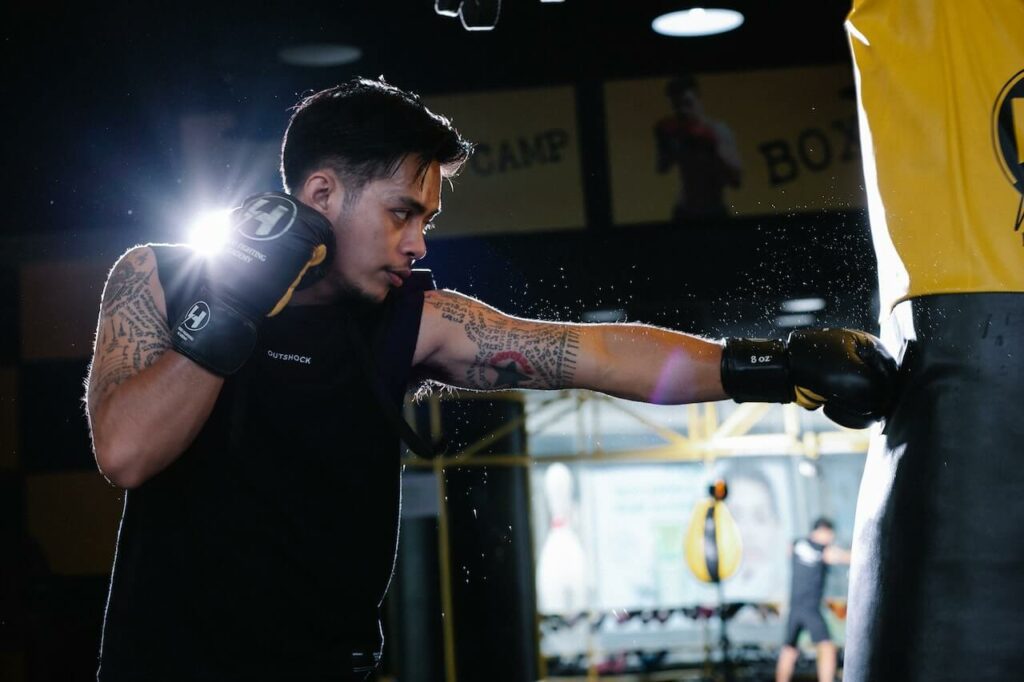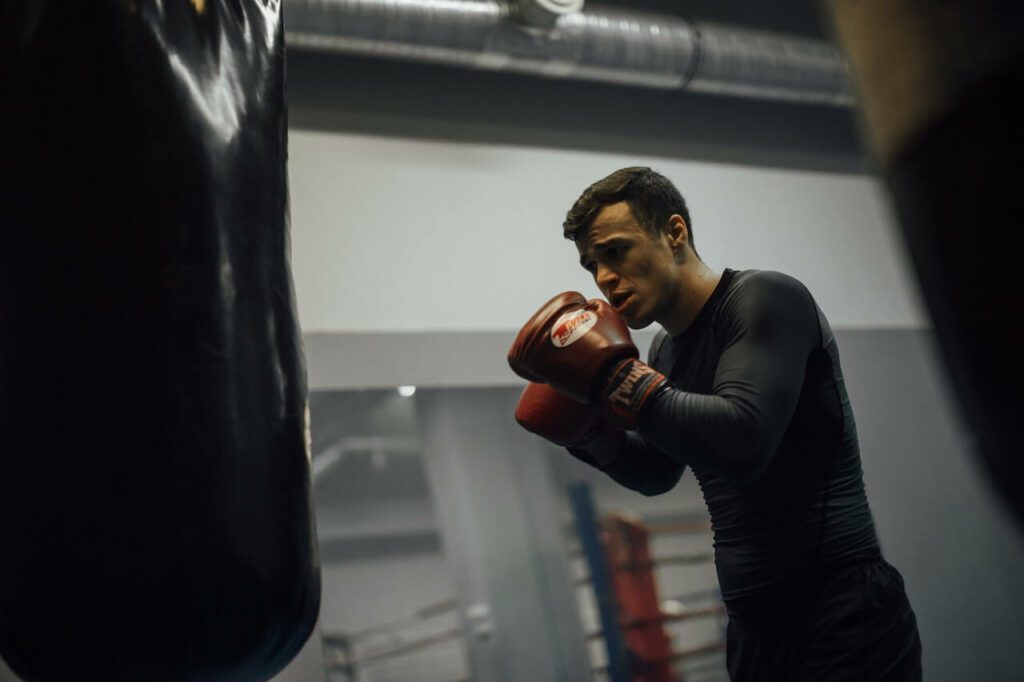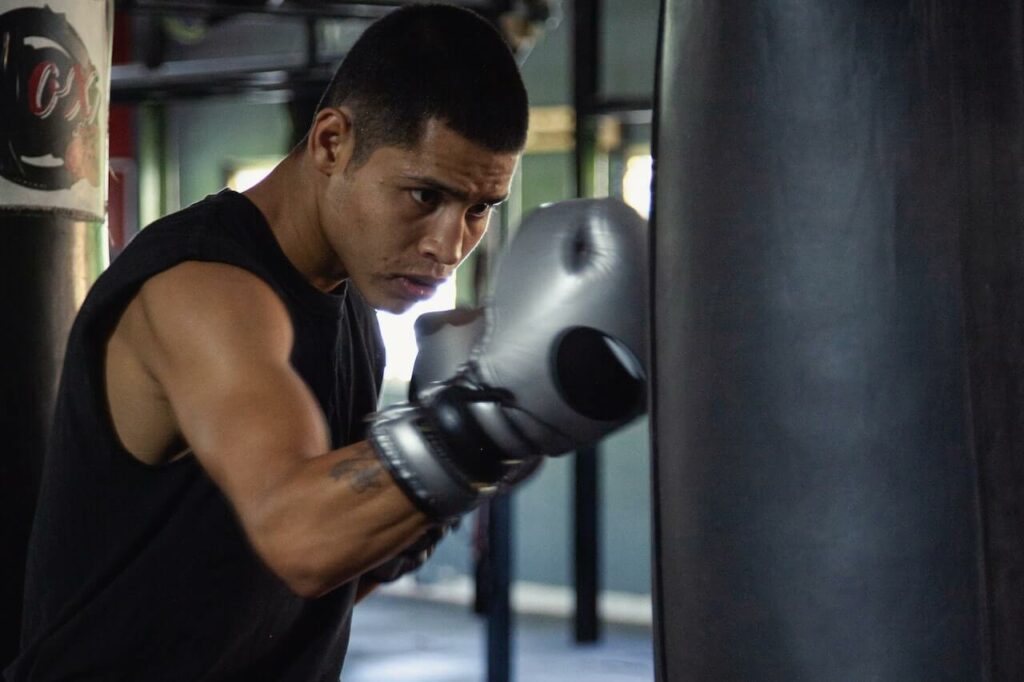Introduction
In boxing, there are only four types of punches: hook, cross, uppercut, and jab. The jab is arguably the most important one between all four and the most used punch in every fight. The jab is the first punch that is taught to a beginner boxer and is a crucial punch for every opportunity and combination in the ring.
Here we will dive deeper into the capabilities of the jab to understand its importance, its ability to make opportunities in the ring when to use the jab, how to use it, what to watch for, and how to counter it.

What are the roles of the jab?
The lead hand straight punch, also known as the jab, is the most basic punch in boxing. It has several roles, including:
- Measuring the distance between a boxer and his opponent – by throwing the jab constantly, a boxer will know if he is in range for more punches or if he is too far. Whenever a boxer wants to know if he is in range for landing a cross, he will often throw a jab first.
- Stopping the opponent from getting closer – a stiff jab is used to make the opponent back off and let the boxer maintain distance from his opponent.
- Opening the opponent’s guard to land more punches – whenever the opponent is using a tight guard (covering the head and body), a jab to the body or the head can make the opponent open his guard, which creates an opportunity to land a meaningful punch next.
- Start a combination – most combinations start with the lead hand and usually the jab. The jab is the perfect punch to start a combination since you can fully measure the range from your opponent and charge your cross or right hook to maximum amplitude and power.
- Land a punch without committing – The jab allows a boxer to throw a punch from a distance without over-exposing vulnerable parts and without staying in range of the opponent for long periods.
- Feinting – A jab feint could open the opponent and expose him to different punches. More information about feinting can be found here.
Can the jab be the best punch?
In boxing, there is no such thing as the best punch. Every punch has a different scenario to be fit at. But the jab is the most used punch in every bout, professional and amateur. Using the jab efficiently and effectively can win fights, make the fight easier for a boxer and turn the fight in his favor.
Also check Tony Jeffries amazing video about the jab:
How to train the jab?
Before starting to practice the jab, make sure you are throwing the jab correctly. Keep your boxing posture and turn the hips when throwing the jab. Ensure you extend the lead hand fully and not bend it so the jab will reach its full potential.
You generate the power through the hips and the legs, and by fully extending the arm, the power will be released through the fist at the end of the action.
- Mitt work – requires a partner that will hold the mitts. He will aim the mitt a little higher than your shoulder level height, and you need to maintain your jab distance (your hand should be fully extended while jabbing). Punch with your jab while maintaining the distance repeatedly for a round, switch directions, and move with your feet between each jab.
- Heavy bag rounds – Practicing your jab on the heavy bag is great because you can measure distance and practice your jab power and technique.
- Combine at the beginning of your heavy-bag workouts two rounds of only jabbing. Use pivots, angles, and footwork between each jab. Make sure your wrist is fully extended and your shoulders are released for a fully powered whipping jab.
- Shadow Boxing – A good way to practice your jab without equipment, try to visualize an opponent and practice a long, fully extended jab. Keep your shoulder released to get a snappy jab.
- Mirror drill – Stand in front of the mirror while ensuring you have enough distance between you and the mirror. Throw a jab and freeze at the end of the action. Now check your posture, chin, arms, and legs positions.
- A good jab action should be with the front leg rotated a little, the chin down, the backhand protecting the chin, and the lead hand fully extended with knuckles towards the mirror.


How to counter and defend against the jab?
(*Reminder – orthodox boxers are boxers whose lead hand is the left hand, and southpaw boxers are boxers whose lead hand is the right hand) each of them should be dealt with differently. Countering jabbing southpaw boxers and jabbing orthodox boxers, depending on what type of boxing stance you have.
For orthodox boxers against orthodox opponents jabs (notes for southpaw near each section):
- Step back – A step back is an excellent way to avoid being jabbed from a distance.
- Step in towards the outside of the punch (Also for southpaws against southpaws) – Bobbing and stepping forward to get to the left side (outside) of the jab and closer to the opponent. It will also give you an opportunity to counter immediately. You would be able to respond with a cross if executed correctly. Against a southpaw, step towards the inside (the right side) of the punch and counter imminently with a cross.
- Deflect with shoulders – The same way as the Philly shell defense deflecting punches. You can deflect a jab with your shoulders. This will also create a window to counter the jab with a jab.
- Deflecting with the elbows or gloves – Defending with the elbows or palm of the glove will take power off the jab and creates an opportunity to counter with a jab, cross, or hook, depending on the distance from the opponent.
Summary
The jab is the key to boxing and boxing skills, as many professional boxers noted. The jab is the window to all combinations and the basis of all boxing. A good boxer will use the jab often, create opportunities for himself in the ring and utilize it to the maximum to win the fight. This is what makes the jab so a powerful tool in every boxer’s skill set.




